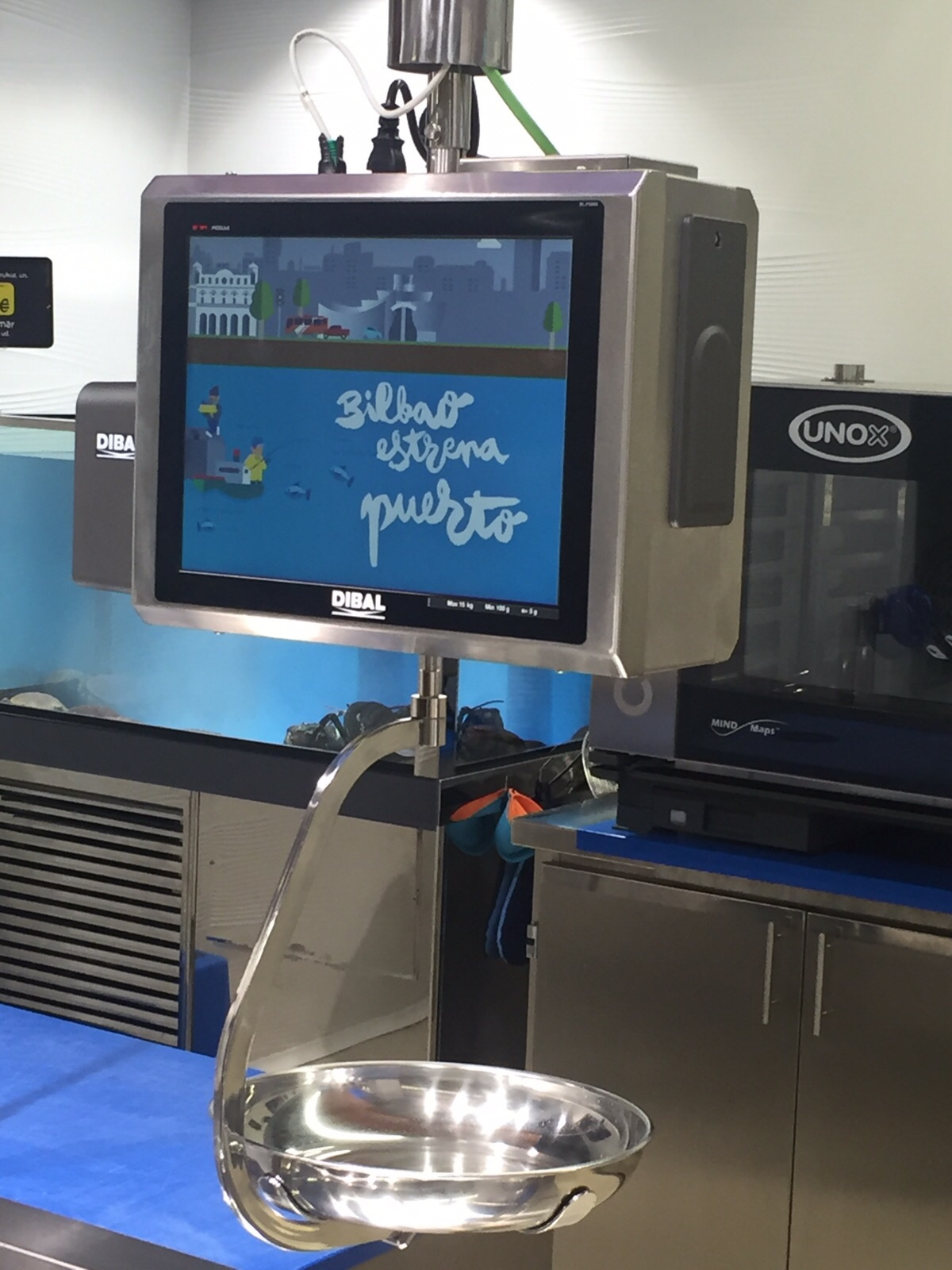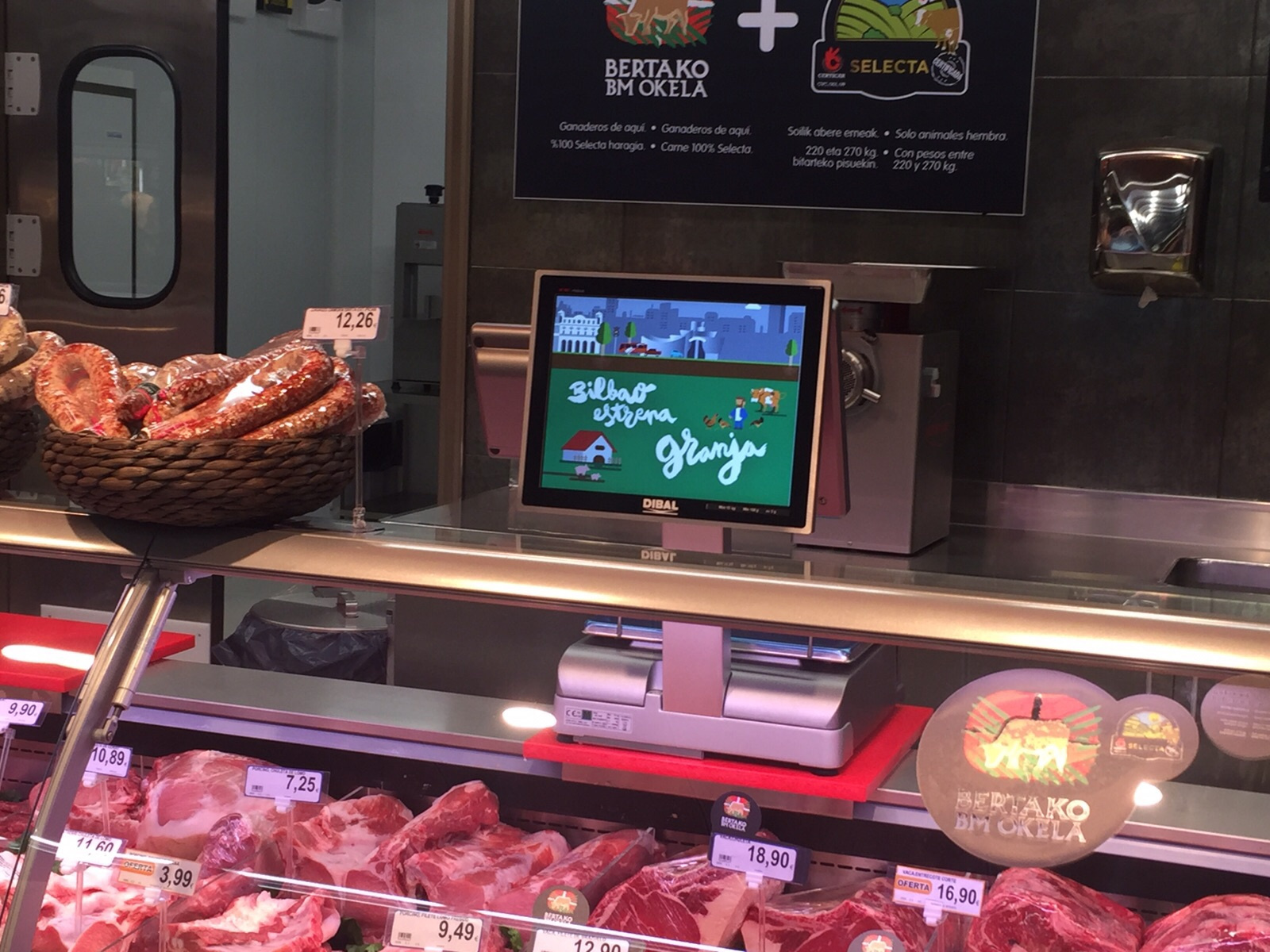Sales, marketing and video surveillance: unusual features of scales in modern stores

In our blog on Habré we write a lot about the technologies used in the field of retail - for example, told that modern cash registers are able and what interesting gadgets can be found in the store.
Today we will discuss another important element of the retail infrastructure - weights. These familiar to all devices have long been used not only for its intended purpose, but also for solving some very obvious tasks.
What scales are in stores, and how much does it cost
Before moving on, find out what scales modern stores use at all. At present, there are two types of such devices in the retail sector: “store” scales and equipment for utility rooms.
')
Weights of the first type include:
- checkout scales;
- scales to check buyers;
- counter scales;
- suspended scales;
- self-service scales (touch and touch);
- portion scales.
The back room of the store also uses a variety of scales:
- Scales of industrial weighing: automatically weigh the goods, pack it and print labels.
- Semi-automatic labellers with a weighing function: weigh the goods and print labels, and the packaging is done by the operator.
- Platform scales can be of different sizes: from small, used for weighing boxes, to large, withstanding tons of weight.
The final set of equipment for weighing depends on the type of store. If the store is large, then it may need devices of different types. In hypermarkets, a significant part of weighing equipment is located in the sales area for the convenience of customers and speeding up the maintenance process. Scales of industrial weighing of a conveyor type are used for "semi-subsea" aquarium-rooms, where they are used to pack goods (meat, cheese, fish). A good example is the Ohaus Defender 3000 scale. In the back rooms, scales are installed to work with incoming cargo - goods are delivered in wagons, so the equipment must be able to handle a serious weight. We are talking about, for example, the scales CAS DB-II.
Fully equipping a hypermarket with all necessary weighing equipment is expensive, so many companies are trying to save on devices of any type. For example, a store can use equipment worth more than 500 thousand rubles for outbuildings, but save on the checkout scale, installing cheap Chinese or Korean devices for 6-8 thousand rubles. The total price of weights for the self-service area and the sales area reaches several hundred thousand rubles.
Marketing and sales: what scales can do
At first glance it seems that the scales in the store have only one function - they help to know the weight of the goods. But modern devices can also act as a marketing tool and increase revenue. First of all, this applies to weights equipped with graphic screens of various sizes.
For example, many self-service scales now not only show data on the goods being weighed, but also broadcast advertising during idle periods. Also, some devices are equipped with a second screen, which constantly displays important store announcements.

Another interesting mechanism is the demonstration of stock data on the same screen, which displays information about the weight of the goods. For example, if a customer weights cucumbers, the system may next show him a warning about discounts on tomatoes. The settings for such an advertisement are quite flexible, for example, the scales are able to recommend products that go well together in a salad.
On all scales and other retail devices with screens, the store can display a general advertisement of the available stocks. If you need to notify customers that a discount on milk is now in effect, then information about this can be displayed on all screens in the room - this is an effective way to attract attention. This is due to the fact that often all the weighing equipment in hypermarkets is tied into the general local network of the store, either through an Ethernet connection or via Wi-Fi.

Also recently, the technology of the so-called label without a backing or “endless label” has become popular. When it is used, retail equipment that prints labels - it includes scales of different types - can bring in it not only data about the product, but also promotional information. An example is holding promotions with coupons. They can be printed on the check for the purchase, when presented to the next visit the buyer will receive a discount.
Another scenario is the printing on the product label of a recipe in which it can be used. Going to this step, the shops are trying to expand the check, pushing the customer to buy additional products that are missing.
What else: hardware synchronization
In addition to the main use and marketing functions, the scales are capable of additional benefits. This can be achieved by synchronizing them with other equipment used in the store. An example of such a bundle is the synchronization of scales that are in the self-service system (Self-checkout) with video surveillance. Thus, you can reduce the number of cases of fraud in the store and save on staff (it is not required that each Self-checkout be controlled by a separate security guard). Moreover, the camera can be either installed above the self-service area, or integrated directly into the scales, as is done with ATMs.
Also scales can be synchronized with electronic price tags . This allows you to save efforts on prescribing price tags of the weight of the goods - immediately after the employee weigh the meat or fish, the price of this piece will be automatically calculated and displayed on the display.
How-to: how to shop to choose scales
In conclusion - a few tips from Pilot experts on choosing weights for the store:
- Scales must be used for its intended purpose. No need to try to lay out heavy loads on the weighing scales in the back room, and weigh the pieces of beef in the aquarium-room with the self-service weights. Not only can the device malfunction from improper use, but you still don’t use all their functionality. Instead, relatively speaking, you will be pounding nuts with a royal seal.
- It is important to think about the reliability and ease of connection. Choosing scales, pay attention to how they will be synchronized with the internal systems of the store, whether they can work in a harmonious combination with cash registers and other peripherals. It is important that the scales have a large variety of synchronization protocols. For example, the Dibal DPOS400 has 40 protocols and the ability to connect via COM and USB.
- It is not always worth overpaying for additional features. There are check weights, equipped with a swivel stand, which displays additional information about the weight of the goods and its cost per kilogram. Understandably, they are more expensive than scales, which have no rack. However, it is far from a fact that this rack is really needed. The fact is that the client is inconvenient to look at her. It is better to display information on the cashier’s customer monitor - this is more informative. In addition, scales with a rack occupy more space, and the space of the cash node is already markedly limited, and many other devices need to be entered into it.
- In the self-service area, the most important thing is the size of the display. The client wants to solve his problem as quickly as possible, and the big screen helps in this. For example, on a large screen you can show not only the interface of the weighing system, but also display codes for popular products. Thus, the buyer will be able to weigh everything that is needed at once, and not to approach the scales separately with each product.
- Weights with the operator, it is desirable that there was a second screen. If only a store employee can weigh a certain item, then while the customer waits, it is logical to show him important announcements of promotions or advertisements on the second screen.
- Scales must reduce the amount of manual labor. Industrial scales of the conveyor type should require minimal human participation in their work. The ideal option is when store employees only cut the goods and put them on the scales, and weighing, printing labels and packaging are carried out automatically using one set, rather than several devices.
Source: https://habr.com/ru/post/328852/
All Articles